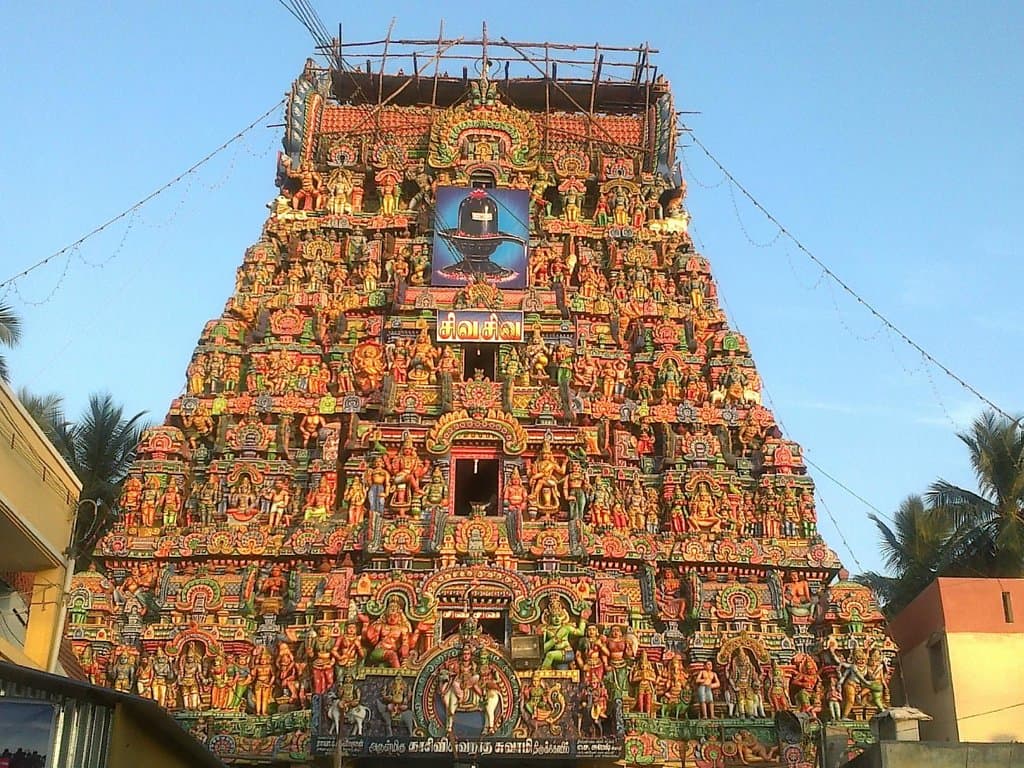
Adi Kumbeswarar Temple Kumbakonam
A 1,300-year-old Shiva temple, spiritual heart of Kumbakonam, famed for its cosmic pot legend and Dravidian architecture.
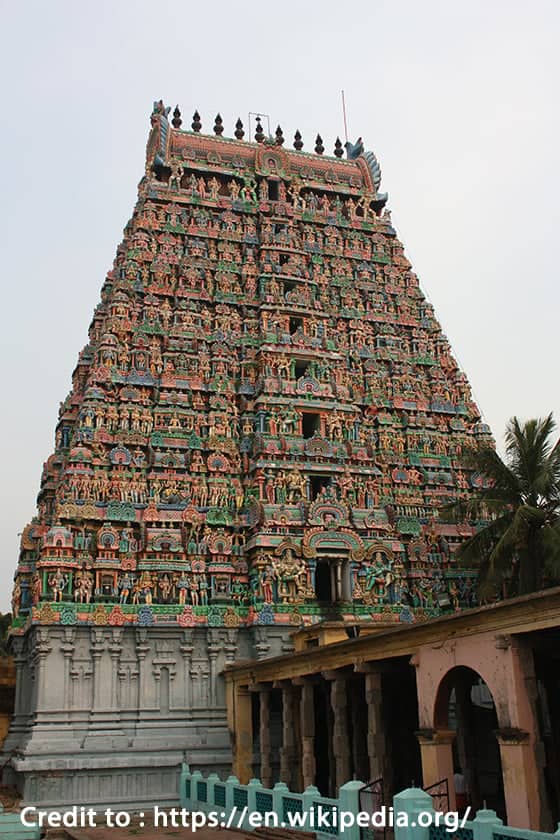
Highlights
Must-see attractions

Social
From TikTok & Reddit
Best Time
Peaceful darshan

Adi Kumbeswarar Temple Kumbakonam
Best Time
Peaceful darshan

Highlights
Must-see attractions
A 1,300-year-old Shiva temple, spiritual heart of Kumbakonam, famed for its cosmic pot legend and Dravidian architecture.
"One of the oldest and most peaceful Shiva temples in Kumbakonam, worth to visit."
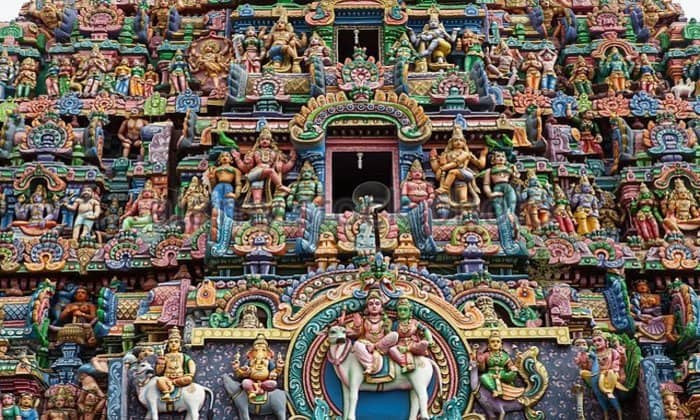
🎯 Arrive after 7 PM for calm
Experience a peaceful darshan with no crowds by visiting after 7 PM.
👟 Dress modestly
As a religious site, modest attire is recommended for all visitors to show respect. :dress_clothing:
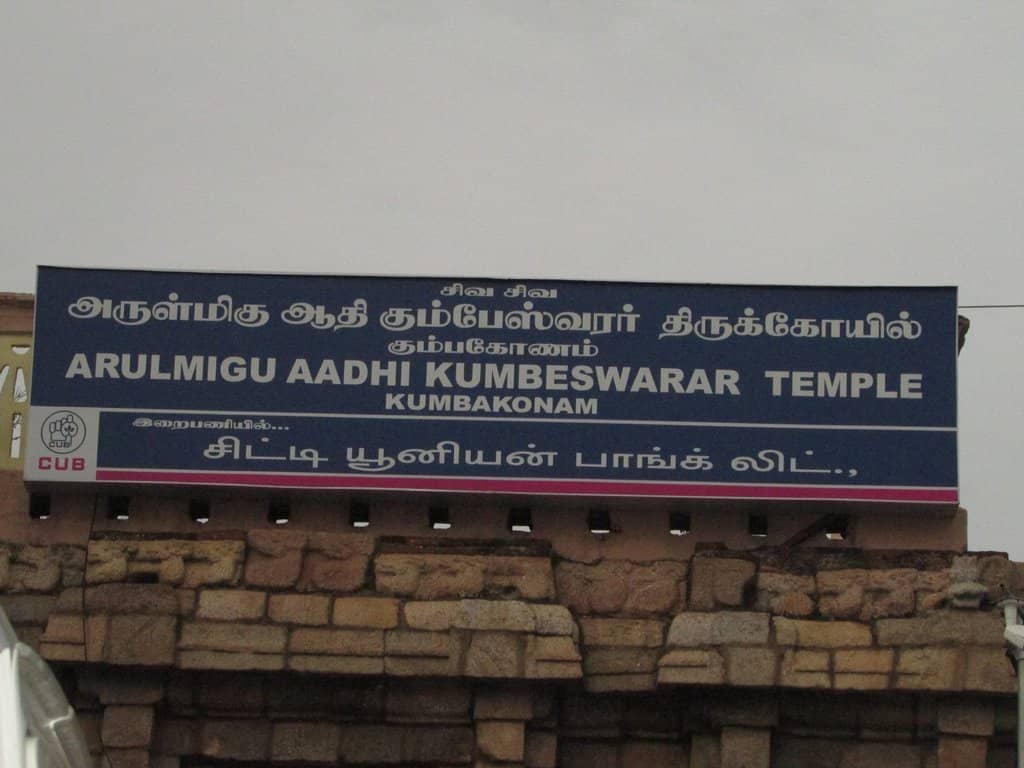
Highlights
Discover the most iconic attractions and experiences

Majestic Rajagopuram
Eastern Entrance
Marvel at the towering 9-story eastern gateway, an impressive 128 feet high, showcasing classic Dravidian architecture.
Mythological Nectar Pot Legend
Temple Complex
Discover the story of Lord Shiva breaking the cosmic pot, which gave the town its name and spiritual significance.

Intricate Star and Zodiac Hall
Navaratri Mandapam
Admire sculptures of the 27 stars and 12 zodiacs carved from a single stone, a testament to ancient craftsmanship.
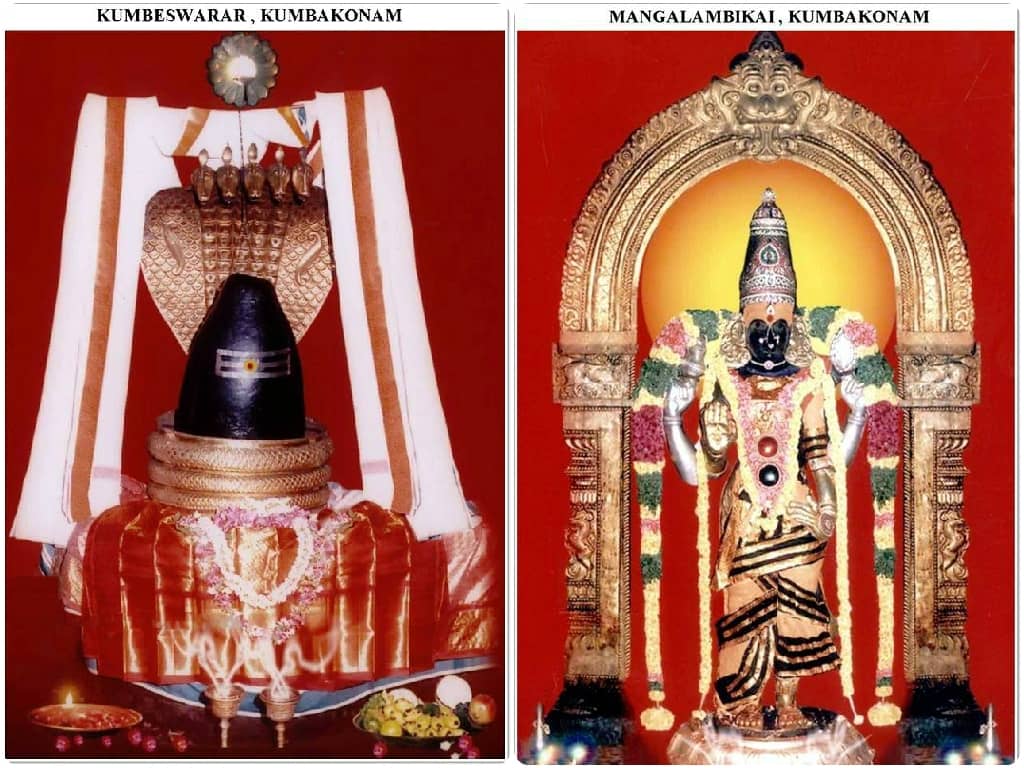
Serene Shivalinga
Main Sanctum
Experience the divine presence of Lord Shiva as Adi Kumbeswarar, represented by a unique conical Shivalinga.
Plans like a pro.
Thinks like you
Planning Your Visit
Timing Your Visit for Serenity
Understanding the Sacred Legend
Best Times
Insider Tips
from TikTok, Instagram & Reddit
🎯 Arrive after 7 PM for calm
Experience a peaceful darshan with no crowds by visiting after 7 PM.
👟 Dress modestly
As a religious site, modest attire is recommended for all visitors to show respect. :dress_clothing:
📸 Photography rules
Check for any restrictions on photography inside the inner sanctums. :camerawithflash:
💧 Mahamaham tank dip
Consider a holy dip in the Mahamaham tank during the festival for spiritual purification. :droplet:
Tips
from all over the internet
🎯 Arrive after 7 PM for calm
Experience a peaceful darshan with no crowds by visiting after 7 PM.
👟 Dress modestly
As a religious site, modest attire is recommended for all visitors to show respect. :dress_clothing:
📸 Photography rules
Check for any restrictions on photography inside the inner sanctums. :camerawithflash:
💧 Mahamaham tank dip
Consider a holy dip in the Mahamaham tank during the festival for spiritual purification. :droplet:
What Travellers Say
Reviews Summary
Visitors consistently praise the Adi Kumbeswarar Temple for its ancient spiritual aura, impressive Dravidian architecture, and serene atmosphere, especially when visited during off-peak hours. The temple's rich mythology and historical significance are frequently highlighted as major draws, offering a profound cultural experience. While generally well-maintained, some may find the crowds overwhelming during major festivals.
"Visited on today morning. One of the oldest and most peaceful Shiva temples in Kumbakonam.. It is believed to be over 1,300 years old. Built by the Cholas and expanded by the Nayaks It’s tied to a cool legend where Lord Shiva broke a pot of nectar here . The temple has beautiful carvings and classic South Indian architecture. Not too crowded, darshan is calm and easy. Worth to visit."
D G BERA
"A powerful and ancient Shiva temple, Adi Kumbeshwarar Temple is the spiritual heart of Kumbakonam. Believed to be over a thousand years old, it is associated with the myth of the cosmic pot (Kumbha) that broke and spread the essence of creation — giving the town its name.
The temple features a majestic Rajagopuram, intricate carvings, and a deeply sacred atmosphere. Lord Shiva here is worshipped as Kumbeshwarar, and Goddess Parvati as Mangalaambigai. It’s one of the largest temples in the region and holds immense religious significance, especially during the Mahamaham festival held once every 12 years.
The temple complex is well-maintained, spacious, and full of divine energy. It’s a must-visit for those interested in ancient temple architecture, Saivite traditions, and deep-rooted spiritual heritage.
A timeless and divine landmark in Tamil Nadu’s temple circuit."
Hari Trivedi
"The Arulmigu Adi Kumbeswarar Temple, located in Kumbakonam, Thanjavur District, Tamil Nadu, is a revered Hindu temple dedicated to Lord Shiva as Adi Kumbeswarar, represented by a unique conical Shivalinga, and his consort Parvati as Mangalambigai Amman. This ancient temple, one of the 275 Paadal Petra Sthalams glorified in the 7th-century Tamil Saiva work Tevaram by Nayanmar saints Appar and Sambandar, is a significant spiritual center, also recognized as a Shakti Peetha where Parvati is worshipped as Manthira Piteswari.
Historical and Mythological Origins:
The temple’s history dates to the 9th century CE during the Chola dynasty, which laid its foundational masonry. Later expansions occurred under the Vijayanagara rulers and Thanjavur Nayaks (15th–17th centuries), with contributions from Govinda Dikshitar, a chieftain under Achutha Nayakar. The temple’s name and that of Kumbakonam derive from a legend tied to the cosmic dissolution (Pralaya). Lord Brahma created a pot (Kumbha) containing the seeds of life and Vedic knowledge, adorned with sacred items like mango leaves, bilva, and a coconut. Displaced by the deluge, the pot floated and settled at Kumbakonam, where Lord Shiva, disguised as a hunter, shot an arrow, spilling the nectar (Amirtham) to form the Shivalinga and the Mahamaham and Potramarai tanks. The scattered decorations became other Shiva temples in the region. The town’s name, from “Kudamooku” (pot’s nostril) or “Kumbha” (pot) and “Konam” (angle, due to the lingam’s slight tilt), reflects this myth.
Architectural and Cultural Significance:
Spanning 30,181 sq ft, the temple features four gopurams, the tallest being the 11-story eastern tower (128 feet), and a 330-foot-long corridor. The sixteen-pillared hall from the Vijayanagara period showcases sculptures of the 27 stars and 12 zodiacs on a single stone. The temple houses shrines for deities like Navaneetha Vinayaka, Bhairava, and Lakshmi Narayana Perumal. It is a hub for festivals, notably the Mahamaham festival (every 12 years in Masi, February–March), drawing lakhs for a holy dip in the Mahamaham tank, alongside Maha Shivaratri, Chithirai Brahmotsavam, and Thai Poosam.
Modern Context:
Managed by the Tamil Nadu HR&CE Department, the temple remains a vibrant pilgrimage site. Its rituals, performed six times daily, and 12 annual festivals underscore its spiritual importance. Located 2 km from Kumbakonam Bus Terminal, it is easily accessible by road and rail."
Manoj Pathi
What People Like
What People Dislike
Frequently Asked Questions
🚇 🗺️ Getting There
The Adi Kumbeswarar Temple is conveniently located about 2 km from the Kumbakonam Bus Terminal. You can easily take an auto-rickshaw or a local bus to reach the temple. The journey is short and straightforward.
Yes, Kumbakonam has a railway station, making it accessible by train. From the Kumbakonam railway station, you can hire a taxi or an auto-rickshaw to reach the temple, which is a short ride away.
For exploring multiple temples in Kumbakonam, auto-rickshaws are a popular and convenient option. They can be hired for a few hours or a day. Local buses are also available for inter-temple travel.
Limited parking facilities might be available near the temple premises, but it's advisable to check on arrival. Auto-rickshaws and taxis can drop you off close to the entrance.
If you are staying in hotels close to the temple, walking is a pleasant option to experience the town's atmosphere. Confirm the proximity of your accommodation to gauge the walking distance.
🎫 🎫 Tickets & Entry
Generally, there is no entry fee to visit the main temple complex of Adi Kumbeswarar Temple. However, special darshan or access to certain areas might incur nominal charges.
The temple typically opens early in the morning and closes in the late evening. Specific timings can vary, but it's usually open from around 6 AM to 11 AM and then from 4 PM to 9 PM. It's best to confirm current timings upon arrival.
No, advance booking of tickets is not usually required for general entry to Adi Kumbeswarar Temple as there is no entry fee. You can visit anytime during the opening hours.
Yes, as it is a religious site, visitors are expected to dress modestly. Avoid revealing clothing. Traditional Indian attire is common and appreciated. :dress_clothing:
Yes, visiting during festivals like Mahamaham or Maha Shivaratri offers a grand spiritual experience, but expect larger crowds.
🎫 🧭 Onsite Experience
To experience the temple's serenity, visit during early mornings or late evenings, especially after 7 PM, when crowds are minimal.
Key attractions include the towering Rajagopuram, the unique Shivalinga, the intricate Navaratri Mandapam with star and zodiac carvings, and the sacred Potramarai tank.
Photography rules can vary. Generally, photography might be restricted in the inner sanctums. It's advisable to check for signage or ask temple authorities. :camerawithflash:
A typical visit can take anywhere from 1 to 2 hours, depending on your interest in exploring the architecture, understanding the legends, and the time spent in prayer or meditation.
While the temple is ancient, efforts are often made to ensure accessibility. Inquire at the entrance for specific facilities or assistance for visitors with disabilities.
🍽️ 🍽️ Food & Dining
Yes, numerous local eateries and restaurants are located in the vicinity of the temple, offering traditional South Indian cuisine. You can find options ranging from simple tiffin centers to more elaborate dining experiences.
Kumbakonam is famous for its filter coffee, idlis, dosas, pongal, and various vegetarian South Indian thalis. Don't miss trying local sweets and snacks. :coffee:
Absolutely. Kumbakonam is a temple town, and most restaurants offer a wide variety of pure vegetarian dishes. :leafy_green:
Some temples offer prasadam, which are blessed food items. It's worth inquiring at the temple if any such offerings are available during your visit.
Food stalls and restaurants typically operate during regular meal times, from breakfast through dinner, and often stay open until late evening, especially near popular attractions. :timer:
📸 📸 Photography
The towering Rajagopuram, the intricate carvings in the Navaratri Mandapam, and the temple tanks offer excellent photographic opportunities. Capture the architectural details and the spiritual atmosphere. :camerawithflash:
Photography of the main deities inside the sanctum is usually prohibited. Always respect temple rules and look for signage indicating where photography is allowed or disallowed. :noentrysign:
Early morning or late afternoon light can be ideal for capturing the temple's grandeur. The golden hour can enhance the beauty of the gopurams and the intricate stone carvings. :sunrise:
Definitely! The 16-pillared hall with its star and zodiac carvings, the detailed sculptures, and the overall Dravidian architectural style are highly photogenic. :art:
A wide-angle lens is useful for capturing the scale of the gopurams and halls. A prime lens can be good for detailed shots of carvings. Remember to be discreet and respectful while photographing. :iphone:
For Different Travelers
Tailored advice for your travel style
👨👩👧 Families with Kids
To make the visit comfortable for families, consider visiting during the less crowded hours, like early mornings or late evenings. Bring water and snacks, as exploring the large complex can be tiring. If possible, hire an auto-rickshaw for a fixed duration to easily navigate between the temple and other nearby attractions without the hassle of finding transport repeatedly. :family_mm:
🙏 Devout Pilgrims
Participate in the daily pujas if your schedule allows. The temple is also a Shakti Peetha, where Goddess Parvati is worshipped as Manthira Piteswari, adding another layer of spiritual significance. If visiting during the Mahamaham festival, the opportunity for a holy dip in the tank is a profound experience for dedicated devotees.
🏛️ History and Architecture Enthusiasts
Take your time to explore the different mandapams and shrines, noting the influences of the Chola, Vijayanagara, and Nayak periods. The temple's historical narrative, tied to Lord Brahma and the cosmic pot, provides a fascinating context for its architectural evolution. Consider hiring a local guide if available to gain deeper insights into the historical and artistic details. :classical_building:
Deep Dives
In-depth insights and expert knowledge
The Legend of the Cosmic Pot
This legend imbues the temple with immense spiritual significance, making it a focal point for devotees seeking blessings and understanding of creation. The scattered decorations from the pot are said to have inspired other Shiva temples in the region, further cementing the temple's foundational role in local Saivite traditions. Visiting the temple offers a chance to connect with this ancient narrative and the deep-rooted beliefs it represents.
Architectural Grandeur and Sculptural Marvels
A particular highlight is the Navaratri Mandapam, a stunning hall from the Vijayanagara period. This mandapam is renowned for its unique sixteen-pillared structure, where sculptures depicting the 27 stars and 12 zodiac signs are intricately carved from a single block of stone. This feat of craftsmanship is a testament to the skill of the ancient artisans. Beyond this, the temple is adorned with numerous other sculptures of deities and mythological figures, each telling a story and adding to the visual richness of the sacred space.
The Significance of Mahamaham
As one of the 12 Shiva temples associated with Mahamaham, Adi Kumbeswarar Temple becomes a focal point of pilgrimage and religious fervor during this period. The temple complex buzzes with activity, with special pujas, processions, and cultural programs taking place. While visiting during Mahamaham offers an unparalleled spiritual experience, it also means dealing with very large crowds. For those seeking a more tranquil visit, it's advisable to plan your trip outside of this 12-year cycle.
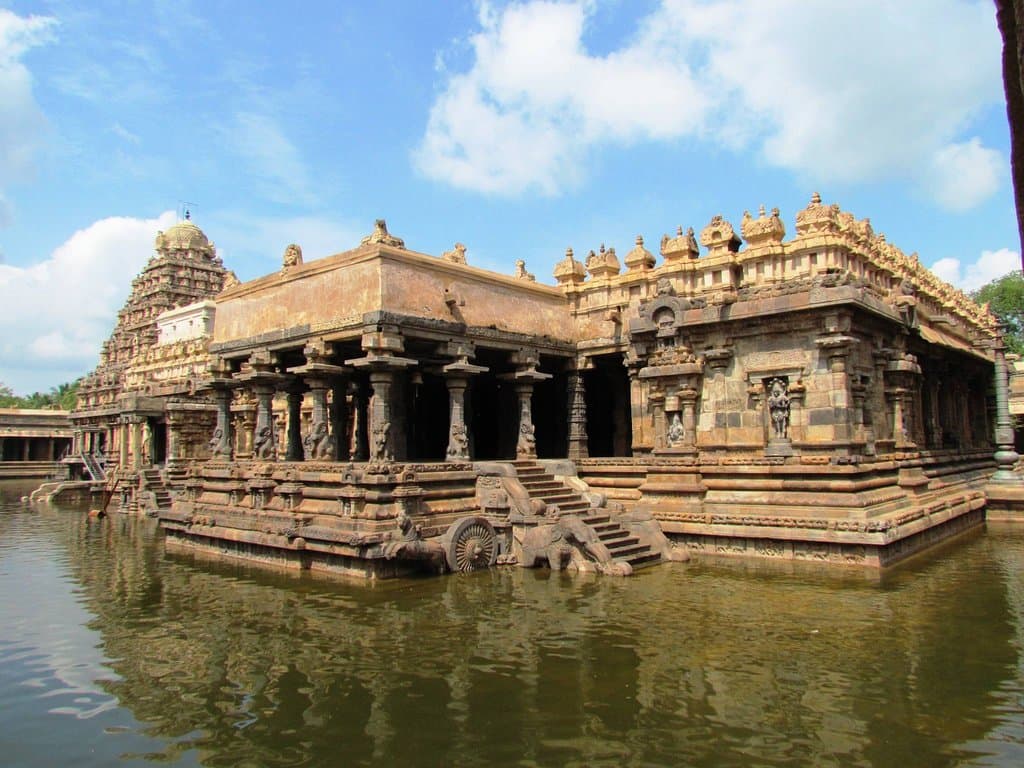
Social
from TikTok, Instagram & Reddit